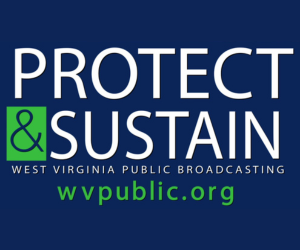West Virginia’s hospitals continue to navigate an altered landscape since the onset of COVID-19. While there has been progress over the past year, hospitals in West Virginia still face a broad ranging shortage of healthcare workers. Health care providers struggle with a backlog of care for patients, problems with supply chains, mounting financial pressures and legislative changes to insurance.
Jim Kaufman, president and CEO of the West Virginia Hospital Association, said staffing challenges are evident at nearly all of the state’s hospitals.
“We’re only operating about two thirds of the beds we’re licensed for in West Virginia because of staffing issues. It’s not just nursing, it’s respiratory therapists, it’s occupational therapists, patient care techs, it’s every profession across the board and it’s also non-clinical operations that are impacting hospitals’ operations.”
Kaufman said West Virginia hospitals spend an estimated $97 million due to registered nurse vacancies alone. Factors that have exacerbated the shortage include declining college enrollment, fewer people entering the profession, increased burnout, an aging workforce and COVID-19.
The association is working with health care providers on ideas that include an apprenticeship program as well as promoting more nursing career ladders which allow nurses to advance in steps through professional development.
“We’re trying to work creatively so as the state is producing more nurses or health care professionals, we can find a way to retain them here,” Kaufman said. “One positive is the huge demand we saw for traveler nurses during the pandemic. That’s easing because they don’t have these surges where they were trying to attract nurses on short notice, but they still have more than 200,000 vacant nurse positions nationwide.”
Kaufman said an initiative announced last June by Gov. Jim Justice to train more nursing and EMS professionals has helped. But while the number of nursing slots in the state has almost doubled, he said the benefits won’t be seen for a year or two.
“Some of the programs they’re doing in 18 months now, but still, it takes a year and a half to two years to get students through their program,” he said. “Once we’re producing them, it is one thing, but keeping them here because of our payer mix, we face a challenge in being able to offer them competitive salaries.”
Kaufman said federal health insurers compensate at a lower rate than private medical insurance.
“A hospital in another state that has a better payer mix, they’re going to have more commercial patients, which means more resources to offer higher salaries, facilities, etc.,” Kaufman said.
In its 2022 report on the state of the country’s hospitals, the American Hospital Association (AHA) reported an overall increase in labor costs, drugs, supplies and equipment. In West Virginia, Kaufman said operating expenses for some hospitals have risen by more than 20 percent since the onset of the pandemic.
“The average hospital in West Virginia right now is facing a -7 percent operating margin because costs have sky-rocketed,” he said. “I mean, everyone talks about the cost of energy for themselves, or food, and hospitals are seeing those exact things.”
In 2023, shortages still persist for things like intravenous contrast media products for computed tomography (CT) imaging, to infant formula.
“The consolidation of manufacturing capabilities in a handful of places, if they go offline. Infant formula was a great example. It was coming out of one place. Well, if one place shuts down for any reason, it has a huge rippling effect,” Kaufman said.
Tim Martin, chief operating officer for Cabell Huntington Hospital – a 303-bed teaching hospital for Marshall University School of Medicine – said skyrocketing costs, underpayments from insurers, and staff shortages are burdening hospitals struggling to balance their budgets since before the pandemic.
“Coming out of the pandemic there’s been increases in staff pay and benefits pay, so you add that together and that’s the reason you are seeing these negative margins – the numbers simply don’t add up,” Martin said.
Despite this financial dilemma, he said the hospital works with local schools to attract students across the healing arts and offers tuition reimbursement and forgiveness programs in addition to daycare assistance. And resources are distributed where possible to help cover patient care.
“We have a significant amount of staff that doesn’t work full-time hours,” Martin said. “We also have some highly skilled professionals and caregivers outside of direct patient care. We’re trying to encourage all available hands, personnel to pick up additional shifts.”
Martin said hours are closely monitored, and an employee assistance program helps staff who feel overwhelmed.
“We have put in fatigue mitigation stations where caregivers can go and detach from everyday grind or relax a little bit,” Martin said. “We’re trying to do everything we can to ensure they don’t reach that breaking point.”
About 75 percent, or three out of four of the state’s patients, are insured through government programs like Medicare and Medicaid or the Public Employees Insurance Agency (PEIA) for state employees. The national average is 45 percent. These programs traditionally pay providers less than the cost of care.
“That’s making it increasingly challenging for us to balance budgets and have that positive margin that we need to reinvest back into our infrastructure and to expand new technologies where we need to,” Martin said.
In January, Wheeling Hospital announced it would no longer accept patients with PEIA. The hospital had struggled with multi-million dollar losses for years. Before the West Virginia Legislature stepped in this year, Kaufman said the insurer paid health care providers like WVU-Wheeling 50 percent of the Medicare rate, but four to five times more to out-of-state hospitals for the same service.
“Now that has actually flipped since the governor signed and the legislature passed legislation raising PEIA to 110 percent of Medicare,” Kaufman said. “As of July 1, Wheeling has announced that they will now go back into network with PEIA.”
In early 2020, Thomas Memorial Hospital filed for Chapter 11 bankruptcy. It emerged from bankruptcy the same year after entering into partnership with WVU Medicine to expand services and ultimately stabilize its financial challenges. WVU Medicine is a nonprofit health enterprise that owns 20 hospitals.
Martin said with people depending on hospitals 24 hours a day, limited resources will continue to threaten patient access to care and prove unsustainable in the long-term. The state also faces the challenge of delayed treatment during the pandemic for illnesses like cancer which translates to costlier care in the long run. When combined with a deficit of staff Martin says it could put a serious strain on a delicate system of care as it exists right now.
“The reason that concerns me, I’m not saying it can happen but I could foresee on the horizon, another health emergency across our country they need a higher level of care and it could overburden the health care system, Martin said.”
“We know that even if we were to close those beds and right side our budget, patients are still showing up at our doors. That doesn’t go away. We’re put into this situation of morally and ethically what’s the right thing to do. Then you have this looming possibility of what might be out there on the horizon that we’ve got to start thinking about and preparing our health care systems for.”
The state also faces other obstacles.
“We have some of the worst statistics and that’s one of our challenges,” Kaufman said. “We have an older population, a sicker population, and when you add into the social economics, a poorer population.”





















 SocjosensPG/Getty Images
SocjosensPG/Getty Images
